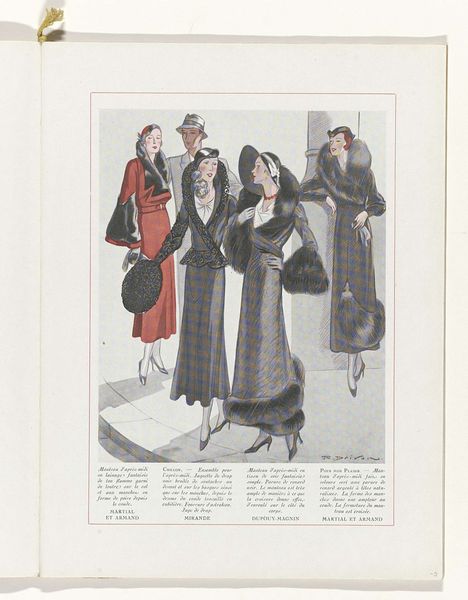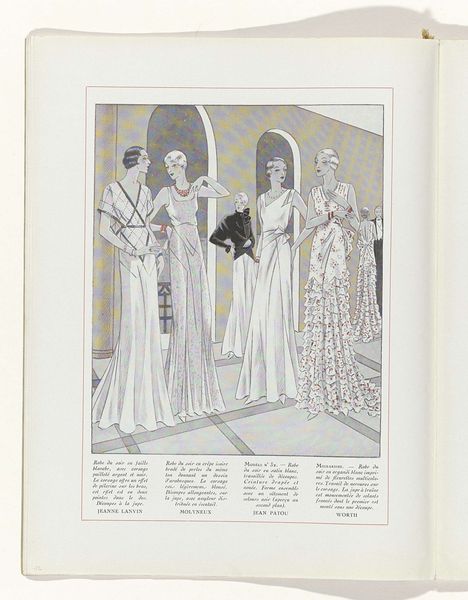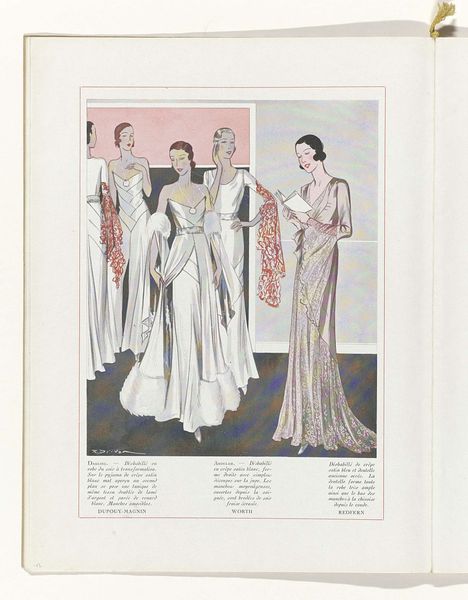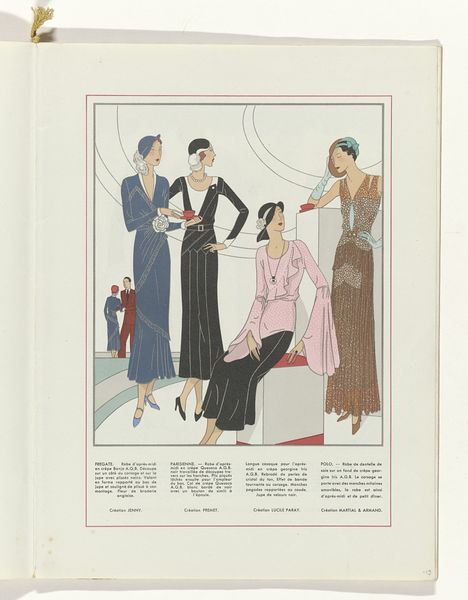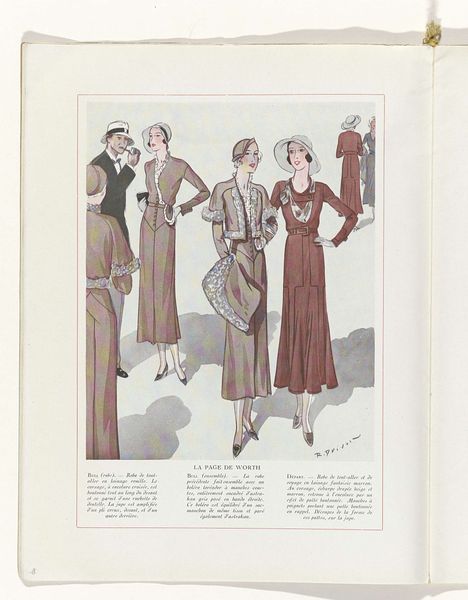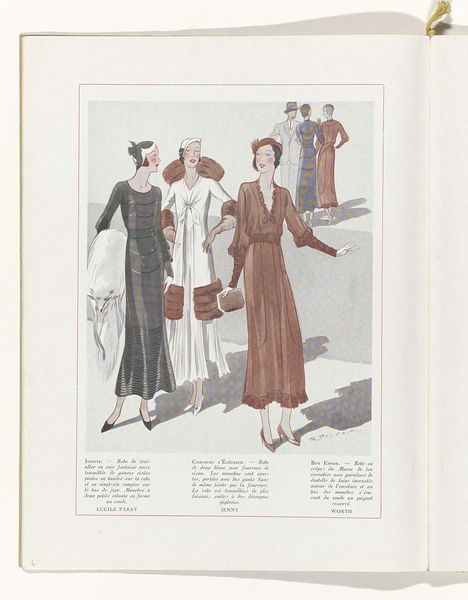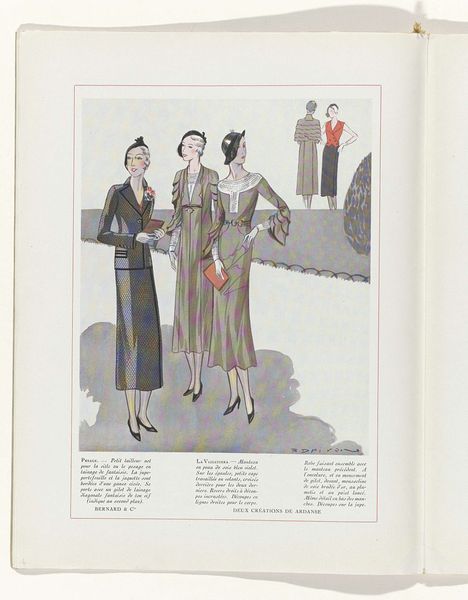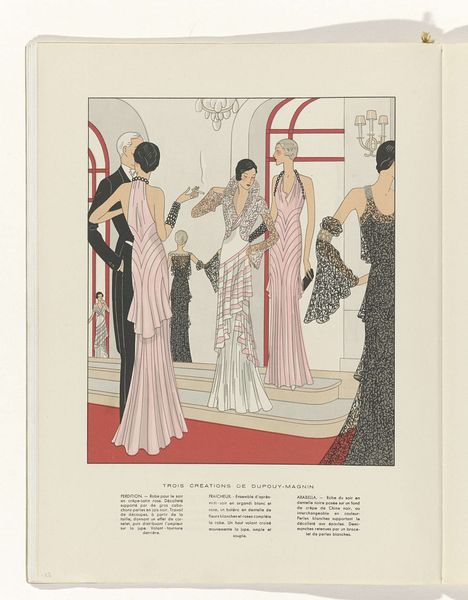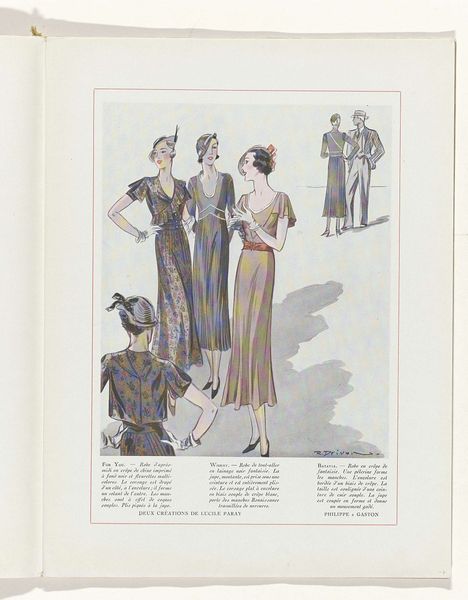
Art - Goût - Beauté, Feuillets de l' élégance féminine, Novembre 1931, No. 135, 12e Année, p. 7 1931
0:00
0:00
#
aged paper
#
pastel soft colours
#
traditional media
#
collage layering style
#
retro 'vintage design
#
feminine colour palette
#
personal sketchbook
#
watercolour illustration
#
cartoon carciture
#
soft colour palette
#
dress
Dimensions: height 315 mm, width 240 mm
Copyright: Rijks Museum: Open Domain
R. Drivon made this fashion plate in 1931 using pochoir, a printing technique that applies watercolor by hand through stencils. The flat color and graphic style suit the industrial processes that underpinned the fashion industry at the time. Although the image looks like it was quickly made, pochoir demanded meticulous labor. A single print could require dozens of stencils, each carefully cut and registered. Then, skilled workers, mostly women, applied watercolor through the stencils with brushes. It’s a labor intensive process rarely seen today. The image gives us some information about the fashion industry, as well as the labor involved in the printing process itself. The women are pictured wearing the latest styles of the time, in an advertisement that was once a part of a popular fashion magazine. The image evokes luxury and status through material means. Paying attention to materials and making lets us consider not only the image, but the larger context of labor, skill, and the rise of the fashion industry. It complicates any distinction between fine art and printed ephemera.
Comments
No comments
Be the first to comment and join the conversation on the ultimate creative platform.

